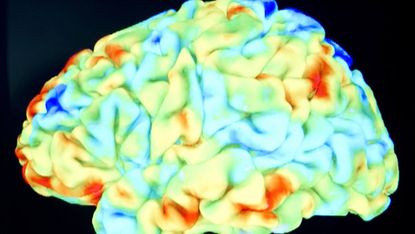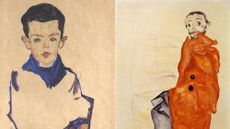Racism and sexism stem from 'optical illusion' in brain
Academics say recognising the problem could dramatically transform society

Racism and sexism stem from an "optical illusion" in the brain which causes an "implicit bias" against those who appear different.
This is the conclusion of academics investigating why people hold culturally defined prejudices.
Speaking at the annual meeting of the American Association for the Advancement of Science in Boston, Professor Lydia Villa-Komaroff said the brain has developed a number of shortcuts which produce a "cognitive illusion" of knowledge, making people prone to hold views such as fearing large black men and thinking maths is a "male" subject.
Subscribe to The Week
Escape your echo chamber. Get the facts behind the news, plus analysis from multiple perspectives.

Sign up for The Week's Free Newsletters
From our morning news briefing to a weekly Good News Newsletter, get the best of The Week delivered directly to your inbox.
From our morning news briefing to a weekly Good News Newsletter, get the best of The Week delivered directly to your inbox.
"It is a human thing, all of us are subject to implicit bias that arises because of our evolutionary and cultural history," Villa-Komaroff said.
The shortcut to fearing or distrusting difference evolved because "we grew up among lions and tigers and bears and people who wanted our property", she added. "We are prone to think that, because of our necessity to survive, anything that's different might be threatening and that remains part of the human condition. So we tend to think of differentness as possibly dangerous."
Villa-Komaroff also said that by recognising the problem and taking steps to address it society can be transformed dramatically for the better.
Georgia State University has completely eliminated the gaps in academic performance based on race, ethnicity and poverty — "attracting attention from academic institutions in South Africa, where the legacy of apartheid still resonates", says The Independent.
An online test has even been developed by Harvard University to enable people to discover just how implicitly biased they are, adds the paper.
Create an account with the same email registered to your subscription to unlock access.
Sign up for Today's Best Articles in your inbox
A free daily email with the biggest news stories of the day – and the best features from TheWeek.com
-
 'Make legal immigration a more plausible option'
'Make legal immigration a more plausible option'Instant Opinion Opinion, comment and editorials of the day
By Harold Maass, The Week US Published
-
 LA-to-Las Vegas high-speed rail line breaks ground
LA-to-Las Vegas high-speed rail line breaks groundSpeed Read The railway will be ready as soon as 2028
By Peter Weber, The Week US Published
-
 Israel's military intelligence chief resigns
Israel's military intelligence chief resignsSpeed Read Maj. Gen. Aharon Haliva is the first leader to quit for failing to prevent the Hamas attack in October
By Justin Klawans, The Week US Published
-
 Puffed rice and yoga: inside the collapsed tunnel where Indian workers await rescue
Puffed rice and yoga: inside the collapsed tunnel where Indian workers await rescueSpeed Read Workers trapped in collapsed tunnel are suffering from dysentery and anxiety over their rescue
By Sorcha Bradley, The Week UK Published
-
 Gaza hospital blast: What the video evidence shows about who's to blame
Gaza hospital blast: What the video evidence shows about who's to blameSpeed Read Nobody wants to take responsibility for the deadly explosion in the courtyard of Gaza's al-Ahli Hospital. Roll the tape.
By Peter Weber, The Week US Published
-
 Giraffe poo seized after woman wanted to use it to make a necklace
Giraffe poo seized after woman wanted to use it to make a necklaceTall Tales And other stories from the stranger side of life
By Chas Newkey-Burden, The Week UK Published
-
 Helicopter sound arouses crocodiles
Helicopter sound arouses crocodilesTall Tales And other stories from the stranger side of life
By Chas Newkey-Burden, The Week UK Published
-
 Woman sues Disney over 'injurious wedgie'
Woman sues Disney over 'injurious wedgie'Tall Tales And other stories from the stranger side of life
By Chas Newkey-Burden, The Week UK Published
-
 Emotional support alligator turned away from baseball stadium
Emotional support alligator turned away from baseball stadiumTall Tales And other stories from the stranger side of life
By Chas Newkey-Burden, The Week UK Published
-
 Europe's oldest shoes found in Spanish caves
Europe's oldest shoes found in Spanish cavesTall Tales And other stories from the stranger side of life
By Chas Newkey-Burden, The Week UK Published
-
 Artworks stolen by Nazis returned to heirs of cabaret performer
Artworks stolen by Nazis returned to heirs of cabaret performerIt wasn't all bad Good news stories from the past seven days
By The Week Staff Published